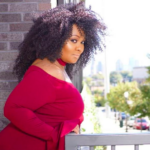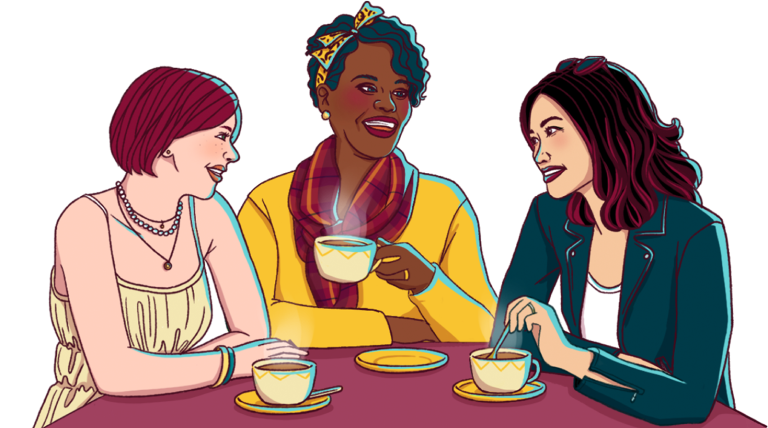Last year saw an incredible amount of new plus-size brands and boutiques launch, but as I’ve made more plus-size friends and watched conversations happen on Facebook and Instagram, a growing discontent has emerged in the plus-size community.
I first noticed it in private Facebook groups for plus-size people, where users across the country (and the world) shared stories about not being able to find plus-size clothing in their size. It wasn’t until I became good friends with plus-size photographer and blogger Suma Jane Dark that I learned what a problem it is.
“It’s really frustrating,” said Dark, “because I grew up pouring over every page of Vogue, but I couldn’t find stylish clothes in my size. It’s gotten better the last few years, but it really sucks to find ‘plus-size’ brands I love that don’t include me.”
After this talk with Suma, it was like this topic turned up everywhere for me (like a plus-size instance of the Baader Meinhof Phenomenon). I’m a size 18/20, but I started to look critically at brand size charts, seeing how “inclusive” established and new plus-size brands really are.
Here's what I learned: Even if a brand did carry up to a size 26 (ASOS) or size 30 (Premme, Eloquii, GwynnieBe), that didn’t always mean that people had access to clothes in those sizes.
Lisa, the blogger behind Mustang Sally Two, explained the issue of access: “Extended sizes are still second class citizens for brands that do carry them."
"I can barely shop in an actual store," she continued. "I can’t really shop in store like Torrid because they barely offer a 5x in store and don’t offer a 28 or 30. But why don’t those over a size 22 or 24 and up deserve that in-store shopping experience?”
We started investigating why brands stop at size 24 and the challenges they face to expand their size range (and their model size).
The answers will make you turn red, roll your eyes, and maybe inspire you to angry tweet.
Problem #1: Manufacturing and Pattern-making
Before getting into the social or economic reasoning behind stopping at a size 24, we need to start where the clothes do. Namely, the design and manufacturing process.
A lot of designers just don’t know how to design for plus-size bodies — because they aren’t taught how to do so. For example: Did you also want to chuck the remote at your screen while watching the most recent season of "Project Runway?" Curve model Liris is a GODDESS, and it was so frustrating when designers didn’t know how to dress her.
Bottom line: Fashion instructors don’t know how to do design for larger sizes, so they don’t teach it and the clothes don’t get made.
But, there are patternmakers and designers out there who do design for plus-size bodies. Rachel Kacenjar, aplus-size designer and pattern-maker, had a lot of thoughts to share on plus-size pattern-making: “Plus size fit is hard. There, I said it. We all hold our weight differently, and where there might be 1 to 3 body types that will wear a size 14, there are more like 4 to 6 body types that will wear a size 30. Our bodies are beautifully complex.”
Even when a brand does want to be inclusive, there are still challenges. Alexis Krase, owner of Plus Bklyn added, “Finding a manufacturer who is willing to work with us to make our Spring 2018 line has been so hard. Oftentimes, I don’t get a direct ‘No, we can’t do that’ but am told so many excuses that it may as well be a no.”
SOLUTION: Manufacturing resource websites like MakersRow should include information on whether a manufacturer has the capability and/or will produce plus-size clothing, and include a resource list on plus-size pattern-makers.
Problem #2: “Plus-Size Women Don’t Buy Clothes” or Disposable Income & Perceptions of It
Being a plus-size person doesn’t come without its share of discrimination, as writer Roxane Gay recently pointed out on her twitter, calling out the Midwest Writers Conference for refusing to give Sarah Hollowell a place on their Organizational Committee because of her size.
And, while this ticks us all off, it’s not technically illegal.
Thanks to a toxic cocktail of hiring discrimination and being given less opportunities, people who are larger than a size 24 may make less money and therefore buy less clothing. This seems to be an often cited reason when talking with people in the fashion industry (but, obviously, no one wants to go on record saying that).
“In my personal experience, I have been told by brands that the larger sizes don’t sell, which makes other brands afraid to expand their price range,” says blogger Marcy Cruz.
This extrapolation is dangerous and discriminatory. If 67% of women in the United States are over a size 14, then a good percentage of women are over a size 24. While fashion won’t solve income inequality, it is hard to to imagine a size 24 woman will do well in a job interview or in a classroom if she can’t find clothing to wear to these places. A lack of options can be incredibly isolating.
Corissa Enneking, the blogger behind Fat Girl Flow, who is a size 26/28, had this to say about brands selling larger sizes: “I get questions on a daily basis from people over a size 24 who are looking for clothing stores that carry their size. People in this size-range are used to having zero options – so why look at new product drops? Brands have to do a lot of outreach so that these customers know they can shop there.”
Part of the problem is the limited size runs that brands do. It’s hard to sell clothes above a size 24 if you don’t have them in stock! Remember Lisa of MustangSallly2? “I personally am shocked to hear that larger sizes don’t sell online because everything I want is gone fast," she said. "If I want a 28 jean from Penningtons, I need to be on it right away as soon as they are released in August for example.”
One really only has to look at the recent rise of plus-size model Saucye West to see that people over a size 24 have been excluded, and are ready for representation.
SOLUTION: Stop being so damn classist, brands. Ask yourselves, “Are women not buying clothes beyond a size 24 because they can’t, or is it because they don’t know what it will look like on them?” More on that next.
Problem #3: Representation & Casting Models
“Seeing a model who is probably like a US 12 isn’t helpful to me,” says Bea Alexandra, an activist, model, and plus-size blogger. “Why would I buy something if I don’t know what it looks like on my body?”
Eloquii and Gwynnie Bee have recently announced that they’ll go up to a size 30, but when you look at their websites, it’s a lot of models who are a size 14 who have an “hourglass shape.” Plus-size staple brands Lane Bryant and Torrid also seem to have this problem.
How are people supposed to buy from brands (with new extended sizing!) if the models don’t show the clothes?
“I find a lot of Plus Bklyn models through social media,” says Alexis Krase. “I get so much positive feedback from customers who are excited to see someone modeling a piece who looks like them. We make it a point to cast diverse models, all of whom aren’t signed, because agencies aren’t signing anyone over a 14.”
Premme cast both a signed model, Anastasia Furrow, to model their size 2, and influencer Natalie Drueto to model a 3 (the brand goes up to what they call a 6, or a size 30). For their latest drop, co-founder Gabi Gregg took to Twitter to ask agencies to cast models beyond a size 14/16.
Gabi is also taking it one step FURTHER and holding an open casting call in LA for her latest collab with Swimsuits for All. If you can’t find them, cast them!
SOLUTION: Large retailers like Eloquii, Lane Bryant, and Torrid can lead the way by requesting plus-size models who are larger than a size 16. This will then lead to smaller startup and indie brands being able to hire these models. And, in the meantime, brands shouldn’t hide behind the “there are no models to cast!” excuse.
What do you think? We want to hear from you and if you have a friend who has been vocal, share this with them too! Use #TCFstyle to share your thoughts on plus-size brands excluding plus-size shoppers.




